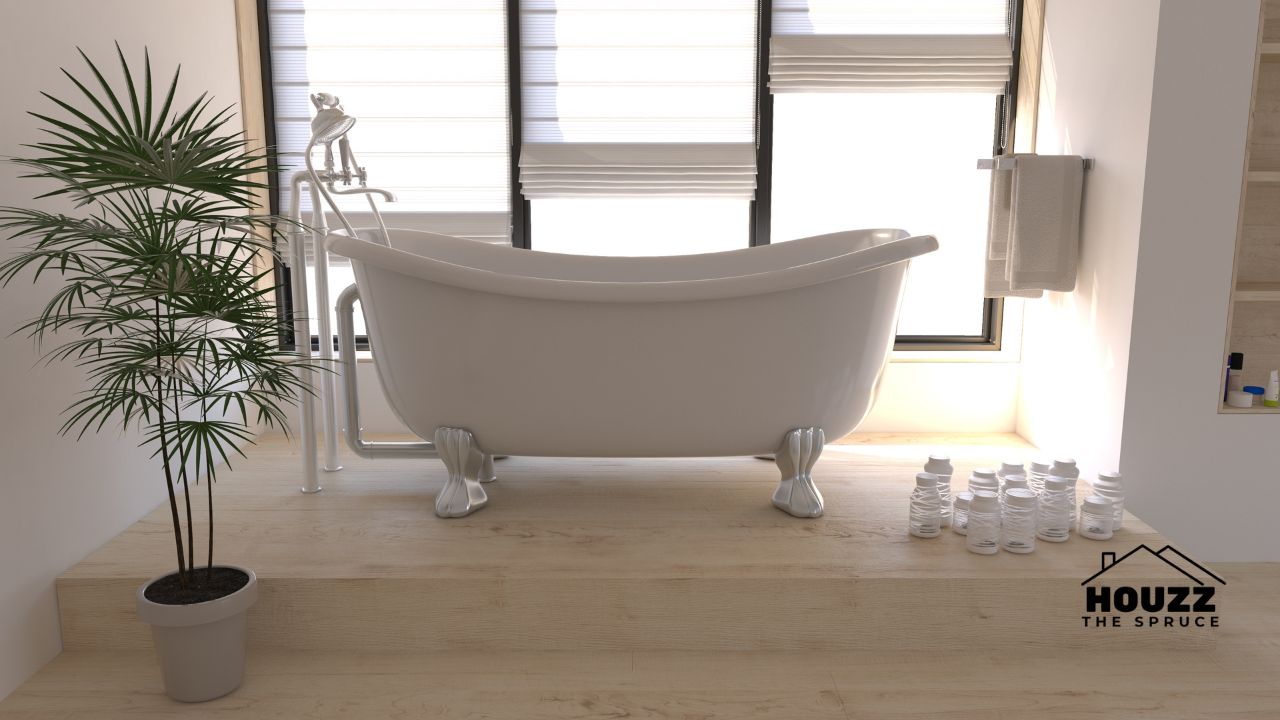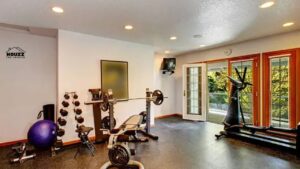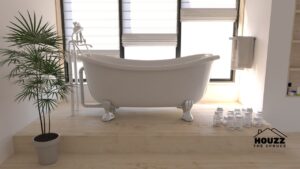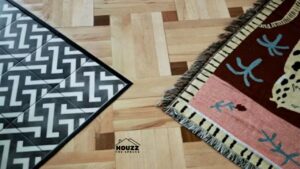Have you ever walked into a bathroom store or scrolled through bathtubs online and thought, “Why are there so many different sizes?” You’re not alone. Choosing the right bathtub can feel confusing — but once you understand bathtub standard measurements, everything starts to make perfect sense. Whether you’re renovating your bathroom or just daydreaming about that perfect soak after a long day, knowing your tub’s dimensions can make all the difference.
Let’s dive into this bubbly world of bathtubs and learn what those numbers really mean.
What Are Bathtub Standard Measurements?
In simple terms, bathtub standard measurements are the typical lengths, widths, and heights that most bathtubs follow. Think of them as “average sizes” that help you figure out if a tub will fit comfortably in your bathroom. Just like shoes come in sizes that fit most people, bathtubs also have standard measurements to fit most homes.
But here’s where it gets interesting — not all bathtubs are created equal. There are dozens of types: alcove tubs, freestanding tubs, corner tubs, drop-in tubs, and soaking tubs, each with slightly different dimensions.
On average, the standard bathtub measurements for a regular alcove tub (the one you often see in most homes) are:
- Length: 60 inches (5 feet)
- Width: 30 inches
- Height: 14–16 inches
These measurements are the most common because they fit well in standard-sized bathrooms. But of course, there’s a lot more to it.
Why Do Bathtub Standard Measurements Matter?
Imagine ordering a beautiful freestanding tub online only to find out it doesn’t fit through your bathroom door — yikes! Understanding bathtub standard measurements isn’t just about numbers; it’s about planning, comfort, and aesthetics.
Here’s why these measurements matter:
- Fit: The tub needs to fit your bathroom layout — not too big, not too small.
- Comfort: You should be able to stretch out and relax.
- Plumbing: Your existing water lines and drain must align with the tub.
- Style: The size impacts how the bathtub looks and feels in your space.
- Budget: Larger tubs usually cost more — not just to buy, but also to install.
Getting these right ensures you avoid messy surprises later.
The Basics of Measuring Your Bathtub Space
Before you even look at catalogs or showrooms, grab a tape measure. To match your bathtub to your space perfectly, you need three essential numbers — length, width, and height.
Here’s how to measure:
- Length: Measure the distance from one end of the wall to the other where the tub will go.
- Width: Measure from the back wall to the front edge of the space.
- Height: Measure from the floor to the top edge of where your tub will sit.
If you already have a tub, you can measure it directly using the same method. Write the numbers down — trust me, they’ll come in handy when comparing bathtub standard measurements later.
Pro tip: Always leave a few extra inches of space around the tub for installation and easy access. You don’t want your new bathtub squeezed too tight like a sardine in a can!
Common Types of Bathtubs and Their Standard Measurements
Let’s break down the most common bathtub styles and their typical bathtub standard measurements. This will help you choose the one that best suits your bathroom size and your soaking style.
1. Alcove Bathtub
- Standard Size: 60″ L × 30″ W × 14–16″ H
- Best for: Small to medium bathrooms
- Why choose it: It fits snugly between three walls, making it space-efficient and easy to install.
- Pro Tip: Add a showerhead above it, and you’ve got a bathtub-shower combo!
2. Freestanding Bathtub
- Standard Size: 55–72″ L × 27–32″ W × 15–20″ H
- Best for: Larger bathrooms
- Why choose it: It’s a statement piece — elegant, stylish, and perfect for a spa-like vibe.
- Pro Tip: Leave at least 4 inches of space around it for cleaning and plumbing.
3. Soaking Bathtub
- Standard Size: 60″ L × 32″ W × 25″ H
- Best for: Deep relaxation
- Why choose it: Higher walls mean you can submerge your body completely for ultimate comfort.
- Pro Tip: Choose one with built-in lumbar support for added luxury.
4. Corner Bathtub
- Standard Size: 48–72″ L × 48–72″ W × 18–22″ H
- Best for: Bathrooms with unique layouts
- Why choose it: It saves wall space while providing a large bathing area.
- Pro Tip: Great for couples who enjoy bathing together!
5. Drop-in Bathtub
- Standard Size: 60″ L × 32″ W × 16–20″ H
- Best for: Custom-built decks or platforms
- Why choose it: You can customize the outer shell to match your bathroom design.
- Pro Tip: Plan your plumbing first — drop-ins need precise installation.
6. Walk-in Bathtub
- Standard Size: 52–60″ L × 30–32″ W × 36″ H
- Best for: Seniors or anyone needing easy access
- Why choose it: Safety and comfort come first; it has doors for easy entry.
- Pro Tip: Ensure the floor is non-slip for added safety.
Each of these styles follows specific bathtub standard measurements, but brands may vary slightly — always check the product details before buying.
How to Choose the Right Bathtub for Your Space
Now that you know the bathtub standard measurements, it’s time to figure out which one is perfect for your bathroom.
Ask yourself these questions:
- How big is my bathroom?
If it’s small, go for an alcove or corner tub. Larger bathrooms can handle freestanding or soaking tubs. - Who will use the bathtub?
A family with kids might prefer a shallow tub for safety, while someone looking to relax might want a deep soaking tub. - Do I need extra features?
Some tubs come with whirlpool jets, heaters, or LED lights. Just remember — the more features, the more space you’ll need. - What’s my budget?
Standard bathtubs start around $300, while luxury ones can reach several thousand dollars.
Choosing a tub isn’t just about looks; it’s about comfort, functionality, and fit. When your bathtub fits perfectly, your entire bathroom feels balanced and beautiful.
Expert Tips to Get the Perfect Fit
Here are some insider tips that pros use when working with bathtub standard measurements:
- Always measure twice. Accuracy matters. One wrong inch can mean a world of trouble during installation.
- Check your doorways. You’d be surprised how many tubs get stuck during delivery!
- Mind your plumbing. Moving pipes is expensive — try to match your new tub’s drain position with your old one.
- Leave space for tile and trim. If you’re planning wall tiles, remember to include their thickness in your measurements.
- Think about cleaning. Freestanding tubs are gorgeous but harder to clean behind.
Getting the right fit is like finding the perfect pair of jeans — when it fits, everything just feels right.
Common Mistakes to Avoid When Measuring a Bathtub
Even the most careful homeowners make mistakes. Here’s what to avoid when dealing with bathtub standard measurements:
- Ignoring height: Many people only focus on length and width, but the height determines how much water your tub holds.
- Forgetting wall clearance: Always leave room for installation and cleaning.
- Not checking the slope: The backrest angle can affect comfort and water depth.
- Skipping floor weight checks: Water is heavy! Ensure your floor can handle the tub’s weight when full.
- Overlooking plumbing layout: If your drain and faucet don’t line up, you’ll face costly fixes.
Avoid these mistakes, and you’ll have a smooth, stress-free installation.
Bonus: Fun Facts About Bathtub Sizes
- The world’s largest bathtub can hold 4,000 liters of water — that’s enough for 26 people!
- The average person uses 30–50 gallons of water per bath.
- In Japan, traditional “ofuro” tubs are much deeper, designed for soaking rather than washing.
- The average bathtub height has increased over the years — from 14 inches to 20 inches in luxury models.
- More than 70% of homes still use the standard 60″ bathtub size.
Who knew measurements could be this interesting?
Wrapping It Up
By now, you’re no longer just a curious shopper — you’re practically a bathtub pro! You’ve learned that bathtub standard measurements aren’t random; they’re based on what works best for most bathrooms and users. You’ve also seen how different bathtub types offer unique benefits, depending on your space and lifestyle.
The secret is simple: measure carefully, choose wisely, and plan smartly. Once you find that perfect fit, every soak will feel like heaven.
Remember — your dream bathroom starts with the right measurements. So grab that tape measure, note down your dimensions, and make sure your next bathtub fits just right.
Because when your bathtub fits your bathroom (and your heart), even an ordinary bath feels extraordinary.
Types of Bathtubs and How Their Measurements Differ
So now that you know the basics of bathtub standard measurements, let’s get into the fun part — discovering the different types of bathtubs and how each one measures up (literally!).
Because here’s the truth — not every bathtub is built the same. Some are cozy and compact, while others are deep, wide, and luxurious. Understanding these differences will help you choose a tub that fits both your bathroom and your personality.
Let’s take a tour through the wonderful world of bathtubs!
1. The Classic Alcove Bathtub
When people think of a “normal” bathtub, they’re usually picturing an alcove bathtub. It’s the kind of tub that fits between three walls, making it the ultimate space-saver.
Standard Measurements:
- Length: Around 60 inches
- Width: About 30 inches
- Height: Between 14–16 inches
These numbers are the bread and butter of bathtub standard measurements. You’ll find alcove tubs in most apartments and homes because they fit perfectly in standard bathroom layouts.
Why It’s Popular:
- Compact and easy to install
- Ideal for combining with a shower
- Affordable and space-efficient
It’s the bathtub equivalent of a comfy sofa — reliable, simple, and perfect for everyday use.
2. The Stylish Freestanding Bathtub
If the alcove tub is your reliable everyday car, the freestanding bathtub is your luxury sports car. It doesn’t need walls around it — it stands proudly on its own, often right in the center of the bathroom.
Standard Measurements:
- Length: 55–72 inches
- Width: 27–32 inches
- Height: 15–20 inches
Freestanding models stretch the limits of bathtub standard measurements, offering both compact and extra-large versions.
Why It’s Popular:
- Looks elegant and timeless
- Adds a spa-like feel to any space
- Available in many shapes — oval, round, rectangular, even slipper-style
If you’ve ever dreamed of sipping a glass of wine in a beautiful soaking tub under candlelight, this is the one.
Just remember, you’ll need enough room around it for cleaning and plumbing access. A cramped freestanding tub loses its magic quickly!
3. The Deep Soaking Bathtub
If relaxation had a shape, it would be this one. The soaking bathtub is designed for long, warm, soul-soothing baths. Unlike shallow standard tubs, soaking tubs are deeper — so you can submerge your whole body.
Standard Measurements:
- Length: 60 inches
- Width: 32 inches
- Height: Around 25 inches
These bathtub standard measurements make the soaking tub perfect for comfort seekers. The extra height means you get more water depth without taking up much more floor space.
Why It’s Popular:
- Ultimate comfort and relaxation
- Ideal for spa-style bathrooms
- Perfect for unwinding after a long day
If you love a deep soak where only your nose and knees stick out of the water, this one’s calling your name.
4. The Space-Saving Corner Bathtub
Have a small or oddly shaped bathroom? Meet the corner bathtub. It’s designed to fit into corners — saving space while still offering a roomy feel inside.
Standard Measurements:
- Length & Width: 48–72 inches (usually square or triangular)
- Height: 18–22 inches
Because of its unique shape, corner tubs don’t follow typical bathtub standard measurements — they’re often measured diagonally.
Why It’s Popular:
- Great for maximizing space
- Stylish and unique
- Can fit two people comfortably
Think of it as the perfect mix between functionality and romance — a small-space wonder with big personality.
5. The Custom Drop-in Bathtub
Want a bathtub that blends beautifully with your bathroom design? The drop-in bathtub is your go-to. It’s designed to “drop” into a pre-built deck or frame, allowing you to customize the outer look with tiles, marble, or wood.
Standard Measurements:
- Length: 60 inches
- Width: 32 inches
- Height: 16–20 inches
Although it sticks close to bathtub standard measurements, the drop-in model offers endless design possibilities.
Why It’s Popular:
- Sleek, built-in appearance
- Perfect for modern bathrooms
- Easier to clean around the edges
The only catch? Installation requires more planning. You’ll need a proper platform and precise plumbing alignment.
6. The Walk-in Bathtub
Safety meets comfort in the walk-in bathtub — designed especially for seniors or anyone who prefers easier access. It features a door that opens outward or inward, allowing you to step in without climbing over a high edge.
Standard Measurements:
- Length: 52–60 inches
- Width: 30–32 inches
- Height: 36 inches
These bathtub standard measurements make walk-ins taller but shorter in length to save space while adding depth.
Why It’s Popular:
- Safe and accessible
- Great for elderly or physically limited users
- Offers built-in seating and non-slip surfaces
It’s not just functional — it’s life-changing for those who need comfort and independence.
7. The Whirlpool or Jacuzzi Bathtub
Now we’re talking luxury! The whirlpool bathtub, often called a Jacuzzi, comes with built-in water jets for a massage-like experience.
Standard Measurements:
- Length: 60–72 inches
- Width: 32–48 inches
- Height: 18–24 inches
These tubs often go beyond bathtub standard measurements because of their internal jet systems and pumps.
Why It’s Popular:
- Offers hydrotherapy benefits
- Feels like a private spa
- Great for easing muscle tension and stress
However, keep in mind that it requires more maintenance — and more space for plumbing and motors.
8. The Japanese Soaking Tub (Ofuro)
This one’s truly unique! The Japanese soaking tub, or ofuro, is shorter in length but much deeper. It’s built for soaking upright rather than lying down.
Standard Measurements:
- Length: 40–48 inches
- Width: 30–32 inches
- Height: 30–36 inches
While it doesn’t fit into the usual Western bathtub standard measurements, it’s ideal for small spaces and deep soaking.
Why It’s Popular:
- Compact yet luxurious
- Uses less water than long tubs
- Promotes mindfulness and relaxation
It’s like bringing a bit of Japan’s spa culture into your own home.
9. The Undermount Bathtub
Similar to a drop-in tub, the undermount bathtub sits below a surrounding deck, giving it a smooth, minimalist look.
Standard Measurements:
- Length: 60–66 inches
- Width: 32 inches
- Height: 16–20 inches
This style keeps to most bathtub standard measurements, but the deck adds width to your overall installation area.
Why It’s Popular:
- Clean and modern appearance
- Easy to clean the rim
- Great for stone or granite surrounds
Perfect for bathrooms where elegance meets simplicity.
10. The Corner Whirlpool Tub
Let’s end with a combo of comfort and design. The corner whirlpool tub merges the space-saving nature of corner tubs with the luxury of whirlpools.
Standard Measurements:
- Length/Width: 54–72 inches
- Height: 20–24 inches
Its bathtub standard measurements vary the most because of the extra jet and pump system.
Why It’s Popular:
- Perfect for shared baths
- Great for relaxing massages
- Adds visual flair to any corner bathroom
If you love both function and flair, this tub delivers the best of both worlds.
Comparing All Bathtub Types at a Glance
Here’s a quick table to help you visualize how these bathtub standard measurements differ:
| Type | Length (inches) | Width (inches) | Height (inches) | Ideal For |
|---|---|---|---|---|
| Alcove | 60 | 30 | 14–16 | Compact bathrooms |
| Freestanding | 55–72 | 27–32 | 15–20 | Large bathrooms |
| Soaking | 60 | 32 | 25 | Relaxation |
| Corner | 48–72 | 48–72 | 18–22 | Space-saving layouts |
| Drop-in | 60 | 32 | 16–20 | Custom designs |
| Walk-in | 52–60 | 30–32 | 36 | Accessibility |
| Whirlpool | 60–72 | 32–48 | 18–24 | Luxury & therapy |
| Japanese (Ofuro) | 40–48 | 30–32 | 30–36 | Deep soaking |
| Undermount | 60–66 | 32 | 16–20 | Modern bathrooms |
| Corner Whirlpool | 54–72 | 54–72 | 20–24 | Shared baths |
This quick chart gives you an instant overview of how bathtub standard measurements change with each type — helping you pick the perfect fit faster.
Expert Advice: Choosing Based on Size & Space
Now that you’ve seen how bathtub standard measurements differ, here’s how to narrow your choice:
- Small bathrooms (under 40 sq. ft): Alcove, corner, or Japanese soaking tubs.
- Medium bathrooms (40–70 sq. ft): Drop-in or freestanding tubs.
- Large bathrooms (70+ sq. ft): Whirlpool, soaking, or double-ended freestanding tubs.
Remember, the goal isn’t just to fill space — it’s to create a balanced, comfortable, and visually appealing bathroom.
Final Thoughts
Every bathtub tells a different story — and their measurements tell you how they’ll fit into your life. From compact alcoves to grand freestanding tubs, understanding bathtub standard measurements gives you the power to choose confidently.
It’s not just about numbers — it’s about creating your own relaxation space. So whether you dream of a deep soak or a quick rinse, there’s a bathtub with the perfect size waiting for you.
And now that you know how different types measure up, you’re one step closer to designing your dream bath — perfectly measured, beautifully fitted, and ready to wash your worries away.












